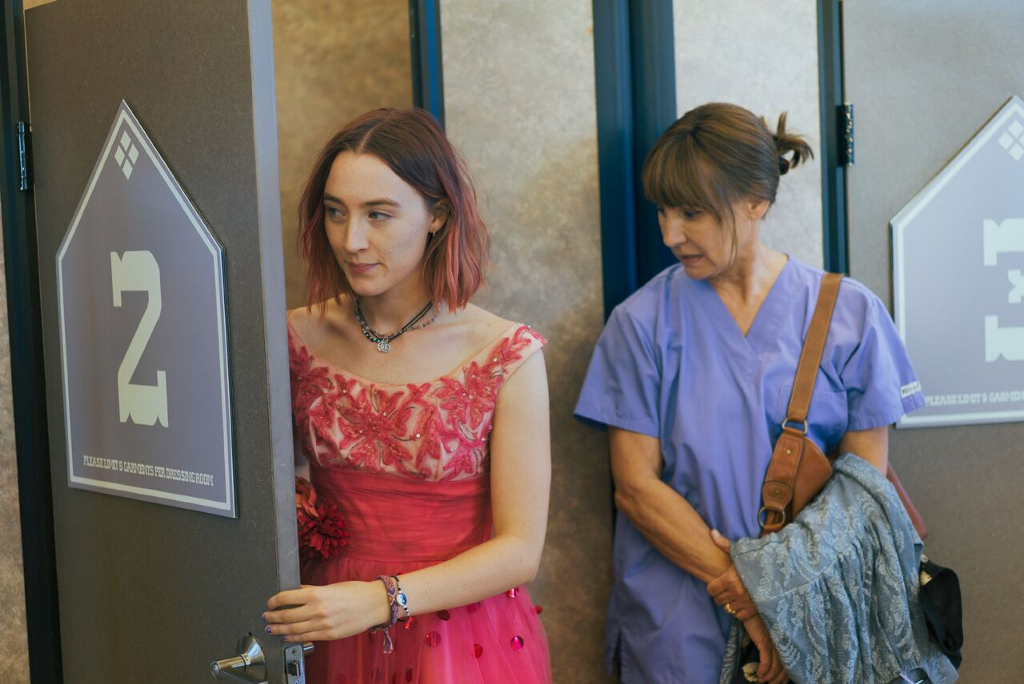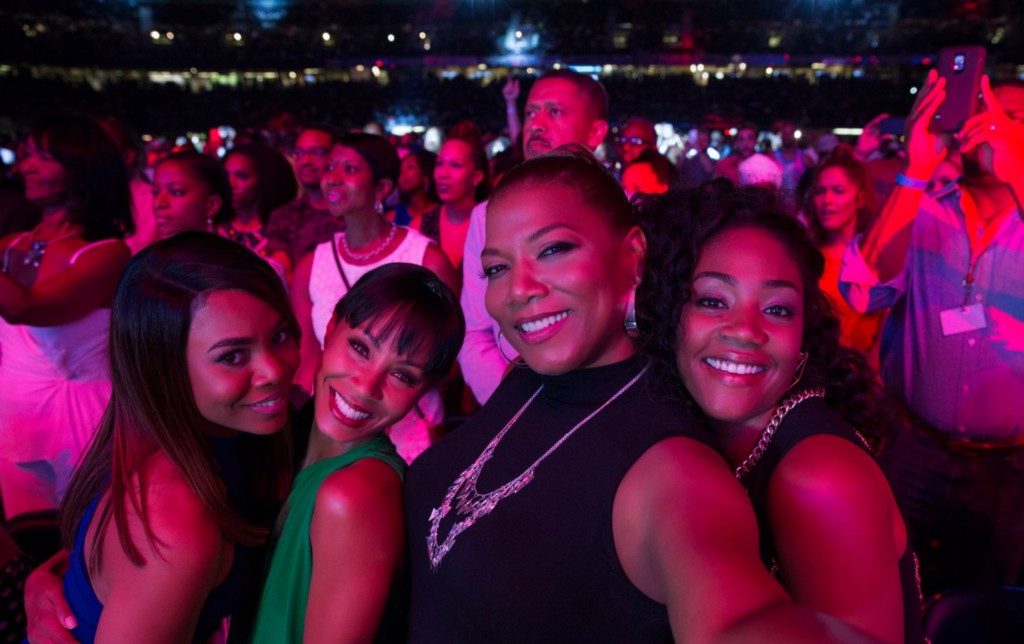Statistics on the State of Women and Hollywood
FILM
2015
Women Behind the Scenes
- Women comprised 19% of all directors, writers, producers, executive producers, editors and cinematographers working on the top 250 grossing films.
- Women comprised 9% of all directors.
- Women comprised 20% of all executive producers.
- Women fared best as producers (26%), followed by editors (22%), executive producers (20%), writers (11%), directors (9%) and cinematographers (6%).
- Women were most likely to work in the documentary and comedy genres, accounting for 36% and 34% of individuals working on these films in these films respectively.
- Women were least likely to work in the action and horror genres, accounting for 9% and 11% of those working on these films respectively.
Center for the Study of Women in Television and Film
2014
Women On Screen (top 100 grossing films)
- Women represented a total of 30% of all speaking characters, 29% of major characters, 12% of protagonists, and 13% of leaders onscreen.
- Male characters were more likely than females to be identified only by a work related role, such as a doctor or business executive (61% of males vs. 34% of females).
- Female characters were more likely than males to be identified only by a personal life-related role such as a wife or mother (58% of females vs. 31% of males).
- The majority of women on screen are in their 20s and 30s, while men are in their 30s and 40s
- Males over 40 made up 53% of all male characters, while females over 40 made up 30% of all female characters.
- 74% of female characters were white. African-American/black characters made up 11%, Latinas 4%, Asian 4%, otherworldly 3%, and other 4%.
- No female actors over 45 years of age performed a lead or co-lead role. Only three of the female actors in lead or co lead roles were from underrepresented racial/ethnic backgrounds. No female leads or co leads were Lesbian or Bisexual characters.
- Less than a quarter of all speaking characters were female in the top animated films. Only 21.8% of speaking characters in action/adventure films were female.
- Females of all ages were more likely than males to be shown in sexy attire (27.9% of females vs. 8% of males), with some nudity (26.4% of females vs. 9.1% of males) and referenced as physically attractive (12.6% of females vs. 3.1% of males).
- Examining patterns of sexualization by age reveals that female teens (13‐20 year olds) were just as likely to be sexualized as young adult females (21‐39 year olds). Middle‐aged females (40‐64 year olds) were less likely than these two groups to be sexualized.
Center for the Study of Women in Television and Film and Media, Diversity, & Social Change Initiative USC
Women On Screen (top 100 grossing films of 2007–2014)
- Females represented just 30.2% of all speaking characters (30,835) across the 100 top films of 2007–2014 (the year 2011 excluded).
- Only 11% of the 700 films were gender balanced or featured girls/women in roughly half of all speaking parts.
- 21 films in 2014 had a female lead or co-lead character, similar to what was observed in 2007 films (20%). Only 3 of the leads or co-leads were played by underrepresented female actors.
Media, Diversity, & Social Change Initiative USC
Women Behind the Scenes
- Women were 17% of the directors, executive producers, producers, writers, cinematographers, and editors working on the top 250 domestic grossing films.
- Women directed 7% of the films.
- Women wrote 11% of the movies.
- Women comprised 19% of all executive producers.
- Women accounted for 23% of all producers.
- Women comprised 18% of all editors.
- Women accounted for 5% of all cinematographers.
- Women comprised 1% of all composers.
- Women comprised 5% of sound designers.
- Women accounted for 5% of all supervising sound editors.
- Women accounted for 5% of all visual effects supervisors.
- Across the 100 top films of 2014, only 15.8% of content creators working as directors, writers, and producers were women. Women only accounted for 1.9% of directors, 11.2% of writers, and 18.9% of producers. Put differently, only two women directed across the 100 top films of 2014. This is not different from 2013 (2 female directors across 100 top films) or 2007 (3 female directors across 100 top films). Twenty‐eight women have worked as directors across the 700 top films from 2007 to 2014. Only three were African American.
Center for the Study of Women in Television and Film and Media, Diversity, & Social Change Initiative USC
2013
Women On Screen (top 100 grossing films)
- Women represent a total of 30% of characters, 29% of speaking parts 15% of protagonists/leads.
- Women are younger than men onscreen. The majority of women on screen are in their 20s and 30s, while men are in their 30s and 40s. Males over 40 make up 55% of all male characters, while females over 40 make up 30% of all characters.
- 78% of male characters have definable occupations compared with 60% of female characters, and more men are seen in the workplace.
- 73% of female characters are white. African-American characters make up 14%, Latinas 5%, Asian 3%; otherworldly 3%; and other 2%.
- 17% of all characters are leaders, but of those characters 21% were men and 8% were women.
Center for the Study of Women in Television and Film
Women Behind the Scenes
- Women were 16% of the directors, executive producers, producers, writers, cinematographers, and editors working on the top 250 domestic grossing films.
- Women directed 6% of the films.
- Women wrote 10% of the movies.
- Women comprised 15% of all executive producers.
- Women accounted for 25% of all producers.
- Women comprised 17% of all editors.
- Women accounted for 3% of all cinematographers.
- Women comprised 2% of all composers.
- Women accounted for 23% of production designers.
- Women comprised 4% of sound designers.
- Women
accounted for 9% of all supervising sound editors. - Women
comprised 2% of all special effects supervisors. - Women
accounted for 5% of all visual effects supervisors.
Center for the Study of Women in Television and Film
2012
Women Behind the Scenes
- Women were 18% of the directors, executive producers, producers, writers, cinematographers, and editors working on the top 250 domestic grossing films.
- Women directed 9% of the films.
- Women wrote 15% of the movies.
- Women comprised 17% of all executive producers.
- Women accounted for 25% of all producers.
- Women comprised 20% of all editors.
- Women accounted for 2% of all cinematographers.
Center for the Study of Women in Television and Film
2011
Women Behind the Scenes
- Women directed 5% of the top grossing films.
- Women wrote 14% of the top grossing films.
- Women comprised 18% of all executive producers.
- Women comprised 25% of all producers.
- 20% of all editors were women.
- 4% of all cinematographers were women.
Stats from the Center for Study of Women in TV and Film
2010
Women Behind the Scenes
• Women directed 7% of the top 250 grossing films.
• Women wrote 10% of the top 250 grossing films of 2010
• Women comprised 15% of all executive producers.
• Women comprised 24% of all producers.
• 18% of all editors were women.
• 2% of all cinematographers were women.
Stats from the Center for Study of Women in TV and Film
2009
Women Behind the Scenes
- Women directed 7% of the top 250 grossing films.
- Women wrote 8% of the top 250 grossing films.
- Women made up 23% of all producers
- 18% of all editors were women
- 2% of all cinematographers were women.
Center for the Study of Women in TV and Film, San Diego State U.
2008
Women Behind the Scenes
- Only 6 of the top 50 grossing films (12 of the top 100 films) starred or were focused on women.
- Women comprised 9% of all directors.
- Women accounted for 12% of writers.
- Women comprised 16% of all executive producers.
- Women accounted for 23% of all producers.
- Women accounted for 17% of all editors.
- Women accounted for 25% of production managers.
- Women comprised 44% of production supervisors.
- Women accounted for 20% of all production designers.
- Women comprised 5% of sound designers.
- Women accounted for 5% of supervising sound editors.
- Women comprised 1% of key grips.
- Women accounted for 1% of gaffers.
- Women comprise only 23% of film critics at daily newspapers.
- Women comprised 22% of directors working on films appearing at the major film festivals compared to 9% on top grossing films.
- Women accounted for 19% of writers working on films appearing at festivals but only 12% on top grossing films.
- Women accounted for 33% of producers working on films appearing at festivals but only 20% of those working on top grossing films.
- Women comprised 23% of editors working on festival films compared to 17% of those working on top grossing films.
- Women comprised 9% of directors of photography working on festival films but only 4% of those working on top grossing films.
- Overall, women comprised a larger percentage of behind-the-scenes workers on documentaries than narrative features. Of all behind-the-scenes individuals working on documentaries, 29% were female and 71% were male. Of all behind-the-scenes individuals working on narrative features, 18% were female and 78% were male.
Center for Study of Women in TV and Film at San Diego State University
2007
Behind the Scenes
- In 2007, women only comprised 15% of all directors, executive producers, writers, cinematographers, and editors working on the top 250 grossing films.
- In 2007, only 6% of the top 250 grossing films were directed by women.
- In 2007, only 5 of the top 50 films starred or were focused on women.
Center for Study of Women in TV and Film at San Diego State University
Sundance Research for Film Screened at the Festival From 2002–2012
- 29.8% of filmmakers (directors, writers, producers, cinematographers and editors) were female.
- 23.9% of the films in this study were directed by women.
- Films directed by women feature more women in all roles. There is a 21% increase in women working on a narrative film when there is a female director and a 24% of women working on documentaries.
- Females direct more documentaries than narrative films — 34.5% vs 16.9%.
TV
2014–2015 Season
Directing
- Women directed 16% of all episodes.
- 84% of first-time episodic directors were male.
- 3% of episodes were directed by minority females.
Directors Guild of America
2013–2014 Season
- Women made up 42% of the characters and speaking roles.
- Female characters continue to be portrayed as younger than their male counterparts.
- 74% of female characters were white, 14% were African-American, 5% were Latina, 6% were Asian, and 1% were of some other race or ethnicity.
- Women comprised 27% of all individuals working as creators, directors, writers, producers, executive producers, editors, and directors of photography.
- Women created just 20% of all the shows.
- Women account for 23% of all executive producers.
- Women make up only 13% of directors, 17% of editors, and a paltry 2% of directors of photography.
Center for the Study of Women in Television and Film
Women directed 14% of episodes (DGA)
2012–13 Season
- Women comprised 28% of all individuals working as creators, directors, writers, producers, executive producers, editors, and directors of photography.
— Center for the Study of Women in Television and Film
- Women represent 14% of episodic TV directors — 2% minority women and 12% white women — DGA
2011–12 Season
- 11% of caucasian women and only 4% of minority women directed scripted TV episodes. (DGA)
- Women represent on 14% of TV director in the UK for the 2011–12 season — Directors UK
- Women comprised 26% of all creators on broadcast programming.
- Women made up 25% of executive producers.
- Women accounted for 38% of producers.
- Women comprise 30% of the writers.
- Women made up 11% of directors.
- Women accounted for 13% of the editors.
- Women made up 4% of directors of photography.
Stats are from the Center for Study of Women in TV and Film at San Diego State University
Research from the Geena Davis Institute- Gender Bias Without Borders
International Study of Films Released Worldwide (G,PG, PG-13 films released 2010–2013)
- There are 2.24 male characters for every female character.
- Only 30.9% of the speaking characters are female.
- Out of 1,452 filmmakers, 20.5% were women, but just 7% were directors. 19.5% of the writers were women, as were 22.7% of the producers.
- Female characters are sexualized all across the globe
— USC Annenberg School for Communication and Journalism







